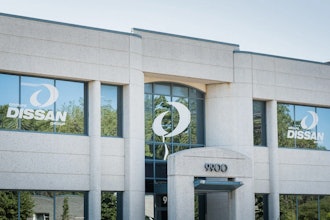The Executive’s Guide to
Digital Transformation
Insite Software Executive eBook
Don’t feel alone if your organization has experienced some disruption as a consequence
of changing market conditions. Most manufacturers and distributors have. Whether
the impacts are from buyers’ expectations for a self-service experience, the dawn
of smart factories, or the increasing use of AI in the marketing cycle, new
strategies are required to compete successfully in a rapidly transforming
B2B ecosystem.
Many companies have responded by deploying some level of digital
technology within their organization with results that can be described as
mixed – at best. At worst, manufacturers and distributors have experienced
extreme frustration, even questioning the value of digitization altogether.
Yet the success (or failure) of digital initiatives can be tied to one
critical factor – the commitment of the organization’s leadership
to changing the way business gets done. For many manufacturers
and distributors, the selection and deployment of digital
technologies have been delegated to IT or Marketing
leadership, with limited participation by other executives.
As companies recognize the strategic value of
digital, organizations need a much higher
level of executive participation and
ongoing commitment going
forward.
Understanding the
Role of the Executive
Chapter One
This eBook focuses on the crucial role of executive leadership within digital transformation,
and the three key areas of influence that will make or break a company’s digital evolution. 2
3
Gartner, a leading technology research firm, defines
digital commerce as the buying and selling of goods and
services using the Internet, mobile networks and commerce
infrastructure. It includes research and marketing activities
that support these transactions, including the people,
processes and technologies to execute at all touch points
throughout the customer buying journey.1
Definition of
Digital Commerce
To arrive at the right strategy, it’s important to think beyond just
commerce. In fact, a B2B digital commerce strategy requires
that you go beyond a one-to-one buyer and seller transaction,
or a responsive website for that matter. Unlike B2C eCommerce
models, manufacturers and distributors support endless
complexity within the buying cycle, including the many-to-many
relationships between people, products and channels.
Thinking Beyond Commerce
In fact, manufacturers and distributors often have several personas
and many different customer journeys to support. Add to that the
customers’ expectation of a consistent, smart experience that is
supported within both online and offline channels. Leaders need to
understand that the impacts of this new eCommerce ecosystem
reach far beyond the transactional cycle.
4
As customers’ expectations continue to evolve and become
increasingly diverse, executives must set the stage for a
commerce environment that is not only always learning
and improving, but providing a consistent multi-touch
journey. Leadership plays a vital role in an initiative of this
magnitude. Executives make three key contributions during
the planning and execution of a successful digital commerce
transformation:
• Playing an active role in the creation of digital strategy,
bringing the greater perspective of the organization’s goals
and mission.
• Championing the need to invest robustly to achieve a true
transformation.
• Setting performance metrics and stay engaged throughout
the entire project lifecycle.
Executive’s Contribution
to Digital Strategy
“Leaders can’t sit back during any phase of the
digital evolution. They must be engaged at all
times. This is a mission-critical endeavor that
requires constant focus, attention and support
of the executive team in order to succeed.”
Karie Daudt
VP of Marketing and Customer
Experience, Insite Software
5
94% of all small- and medium-sized manufacturers in
the US have not adopted digital manufacturing.2
Only 30 percent of U.S.-based industrial manufacturing
senior executives said that their companies were
planning to increase spending on information
technology in the subsequent 12 months.3
Business Strategy
as the Driver of the
Digital Journey
Chapter Two
6
If the perplexing low rate of investment and adoption in
digital technology by mid- to small-size organizations is any
indication, it might seem corporate leadership finds the taking
the first step on the digital journey intimidating. Or they’ve
underestimated the importance of that journey.
But don’t judge harshly. Digital is disruptive. Ecommerce is
not a software or IT platform feature. It’s an ecosystem with
newly emerging business models with their own dynamics, and
everyone – everyone – is still learning. What’s important is that
businesses realize their pains have also changed.
Three kinds of pains motivate the need to begin, or continue,
the digital journey. These pains need to be examined carefully
and fully understood before creating the right strategy.
1. First, revenue may be at stake. The manufacturer or
distributor may need to retain customers or increase revenue
with existing customers or products. Or it may need to find
new customers to generate new revenue streams.
2. Second, increasing efficiency may be a major driver. This
revolves around reducing the cost of serving existing
customers, or of finding new ones. Perhaps customers are
demanding a higher rate of self-service within the buying
cycle, or a new product promises higher margins.
3. Third, engagement may be required. As manufacturers move
to more direct sales models, and distributors create cloud-
based marketplaces, there is a stronger need for digital
brand building and automated marketing. Building digital
trust and higher digital engagement is becoming vital to
retaining existing customers and finding new ones.
What’s Driving the
Digital Journey
7
To focus on the right strategy, leaders must acknowledge
that digital transformation goes far beyond a simple
shopping cart or responsive website. It’s about
understanding that your company is about to change the
way it does business... forever.
Executives Must Be
Fully Vested in the
Digital Transformation
“At Insite we believe a strong B2B digital
commerce environment should accelerate the
productivity of every single person involved
in the buying experience. When that actually
happens, an organization is often transformed
merely from improvements to internal and
external processes. It’s not a pipe dream.
We’ve seen many of our manufacturing
and distribution customers realize triple-
digit improvements within the first year of
implementation.”
Steve Shaffer
Insite CEO
8
To be fully vested, leaders need to in-vest. This means
understanding that in order to create a transformational
commerce ecosystem, they need to ask some very important
questions about the business:
• How do customers want to interact with the business?
Determining the right mix of online and offline sales and
support, and meeting the evolving expectations in terms of
experience are crucial.
• How will this impact sales and marketing? For many
organizations, the move to digital means that marketing takes
the drivers’ seat. Digital marketing can provide performance
metrics impossible to get with traditional analog methods.
This doesn’t mean that sales is not needed, but the value they
provide must evolve.
• How do internal processes need to change in the new model?
For many manufacturers and distributors, complex pricing
and quoting mechanisms must be simplified. Every process,
however, should be evaluated for impact from this new digital
experience.
• How does this impact our current go-to-market strategy?
For many companies, the digital evolution changes the way
they introduce new products and services dramatically. This
impacts not only process but people as well.
Leaders Need
to In-vest
9
“The potential for real-time connectivity with customers, especially through social networks, has generated seemingly endless possibilities for
personalized products, services, and communication.”4
To go beyond commerce and realize the immense opportunities of fully embracing a digital transformation, successful strategy requires
several main components:
Key Components of Digital Strategy
Prepare a Strong View of Your Entire Digital Ecosystem
Identify the core components, marketing components, personas,
and sites for both short and long-term infrastructure needs.
Understanding the technology foundation required before beginning
your digital journey is gaining desired efficiencies, agility, and
results in a hybrid online/offline sales and service model.
Draft the Integration Plan and Gain Support
from the Entire Executive Team
Too often, leaders responsible for enterprise systems are engaged
late in the game. Full integration requires full support at the
beginning of the digital journey. It is a critical component of the
user experience from both a data and an omnichannel consistency
perspective.
Define Important Personas and Create
Your Customer Journey Maps
B2B commerce is complex due to the myriad of roles and
responsibilities involved throughout the buying cycle. Personas
must be prioritized, activities mapped, and then all of these
interactions need to be prioritized, enabled, and enhanced by the
digital buying journey.
Determine Requirements for Marketing
Technology and Marketing Programs.
Martech continues to evolve at a rapid pace. The right marketing
stack should easily interface with your core systems to allow for
smooth launch and greater adoption rates. The faster adoption
goals are achieved, the more quickly your return on investment will
be achieved and propel you towards your next phase.
Highly
Connectable
Configurable
& Customizable
Secure
Environment
No More
Upgrades
User Specific
Content
Complex
Pricing
Extendable
Highly
Connectable
Configurable
& Customizable
Secure
Environment
No More
Upgrades
User Specific
Content
Complex
Pricing
Extendable
Highly
Connectable
Configurable
& Customizable
Secure
Environment
No More
Upgrades
User Specific
Content
Complex
Pricing
Extendable
Highly
Connectable
Configurable
& Customizable
Secure
Environment
No More
Upgrades
User Specific
Content
Complex
Pricing
Extendable
10
Plan for Resource Requirements
This is where many organizations fail to predict accurately, and as
a result fall short of the goal. Minimum resources should include
capabilities in:
- Information technology
- Website management
- Content creation and management
- Digital marketing program development
- Digital marketing execution
- Product content creation and maintenance
- Business operations analysis
- Project management
Remember that a digital transformation provides unique
opportunities to provide ways to re-allocate resources and create
new career pathways for existing employees. Training programs
may be necessary to equip internal resources with new digital skills
in addition to adding those with digital experience to the team.
Plan Out Product Content
It’s imperative that the manner in which product content is created
and managed be defined. It’s impossible for leaders to overestimate
the need for good content management, as more and more of the
buying cycle is driven by the customer’s need to be informed.
Determine Your Partners
For most digital transformations to occur successfully, executives
need to seek outside experts to bring technology, marketing, and
operational excellence leadership to the initiative. You can reduce
risk and ensure success by partnering wisely with a trusted firm or
consultant.
Set Measurable Objectives and Identify
Key Performance Indicators (KPI’s)
Without some quantifiable measurement, it’s impossible to
determine whether you’ve succeeded. Digital channels clearly offer
one of the greatest opportunities available today for manufacturers
and distributors to drive new revenue and optimize their operations,
but this will only happen with a goal-centric approach. KPI’s can
help determine the building blocks for success so that obstacles
can be met and overcome well before implementation occurs.
Highly
Connectable
Configurable
& Customizable
Secure
Environment
No More
Upgrades
User Specific
Content
Complex
Pricing
Extendable
Highly
Connectable
Configurable
& Customizable
Secure
Environment
No Mor
Upgrades
User Specific
Content
Complex
Pricing
Extendable
Highly
Connectable
Configurable
& Customizable
Secure
Environment
No More
Upgrades
User Specific
Content
Complex
Pricing
Extendable
Highly
Connectable
Configurable
& Customizable
Secure
Environment
No More
Upgrades
User Specific
Content
Complex
Pricing
Extendable
11
Successful digital commerce initiatives drive business model transformation, a process few organizations have been through. Regrettably,
that means those embarking on the transformational path have few role models to follow. However, the basic premise that business model
transformation will occur should make you stop and realize that this investment will be significantly larger than technology projects of the past.
And, digital transformation is a multi-year journey, not a one-time project.
Nearly every department in your organization will be impacted by successful deployment of digital technologies. So, the investment not only
includes acquiring and implementing commerce technology but must also include an investment in marketing technologies and programs. They
provide the drivers behind the identification and re-invention of business operations to support a digitally enabled multi-channel approach – or put
more simply, a successful digital transformation.
Then, once a good foundation is in place and adoption is driven upward, looking for and driving innovation will be the next order of business.
While the level of investment is different for every situation, a good starting point is to ask what could be accomplished with an annual investment
of 1% of revenue for the next 3 to 5 years. Most likely, this is significantly higher than technology related investments you’ve made in the past, yet it
is necessary for transformation. Organizations that invest and transform successfully will survive and many will thrive.
Many experts agree that digital technologies have levelled the playing field, so whether you are small and agile with limited funds or large and
inflexible with ample funds, digital technologies let the small play big and the big play small. This is an unprecedented opportunity to reinvent and
innovate your business for the future.
Invest for Transformation
Chapter Three
12
The first step in planning your transformation begins with drafting
a solid understanding of your organization’s current technology
landscape. You can’t get there from here if you don’t know where
“here” actually is. Knowing what you have and where you are
is essential for assessing your digital commerce investment
requirements. Reaching that desired future state requires you to
look at both short and long term demands.
Two areas in particular demand your awareness and intention
when assessing your investment needs, existing fragmentation
and historical technology deficit.
The history of ecommerce started with companies bolting on new
digital technologies onto existing business systems. To add new
digital capabilities, those pioneers simply added new applications,
systems, and devices in a patchwork of fragmented components
to create a nominally integrated platform. Bolt-on technology
was the traditional, accepted way to add innovation by division,
department, and task, even if some components functioned in
isolation. But that was then.
Your digital resources should act in concert, not competition, with
each other and with business processes. Similarly, your digital
initiatives need agility not possible with fragmented systems
to respond quickly in a rapidly changing world. Assessing your
organization’s level of technological fragmentation is essential for
establishing a coherent, sound, and efficient foundation for your
digital transformation. You’ll know exactly what “here” looks like.
Role of Technology
Technology Landscape
Existing Fragmentation
13
In addition to the bolt-on problem, many organizations are in a
technology deficit after years of tight IT departmental budgets.
Faced with devising their own solutions, some departments
would turn to self-funding their own technology initiatives and
managing their own implementations. Those independent efforts
may now be entangled with each other, creating a complicated,
customized architecture that is expensive to maintain and slow
to modify or enhance – even minor changes happen at a snail’s
pace.
If your organization is in a technology deficit, your initial
investment in digital strategy will need to include a plan to get out
from under these unfortunate circumstances. A holistic and agile
approach will not only lead to improved business processes and
new efficiencies, it can generate greater customer engagement,
leading to closer alignment of your organization and the market
you serve.
Historical Technology Deficit
“Your customers want to use digital channels to
connect, research, transact and socialize with
you more than ever before. To not only survive,
but thrive, we need to engage them on their
terms, not on ours.”
Steve Shaffer
CEO, Insite Software
14
The best thing about digital technology is the abundance of available metrics data.
The worst thing about digital technology is the abundance of available metrics data.
The right data may be the route to greater company profits and a bigger bonus
check, but don’t fall into the trap of trying to track too many metrics to drive results.
Your efforts will likely be spread thin and could lead to the organization losing focus
while your new transformation takes root. In general, driving results with two or three
metrics at one time is the optimal approach to achieving results.
Digital metrics best practices start with senior executives identifying and quantifying
which business practice areas can gain the most, then establish goals that make
the journey and expected outcomes clearly visible. Then you can measure both
transformation initiative progress and the business potential created. Good
metrics will influence management decisions while supporting specific outcome
expectations.
Two schools of thought, each with its own categories to measure, guide the selection
of metrics. For those beginning the transformation journey, the first recommends
assessing progress in digitizing your current business model by measuring
departmental -- sales, marketing, operations, etc. -- goals, while also measuring new
revenue sources representing growth, market share, and margin metrics resulting
from a new, digitized business model.
Another view says measure the customer experience, and business operations. A
balanced approach will generate the insight to provide customers with value and
excellent service while simultaneously optimizing business operations. Measuring
the ROI in each of these areas can be accomplished by looking at individual metrics,
such as:
• Changes in revenue
• Improvements to operational efficiency
• Changes with customer relationships and engagement
• How well the company adapts to change, and how flexible leaders
and employees are
• How effectively knowledge is used and shared throughout the organization
The Importance of Metrics
15
As digital initiatives emerge, organizations can refine their metrics
in many ways. For example, the following is a list of metrics
identified by Martin Gill from Forrester Research in “Define New
Metrics for Digital Business Success”:
• Customer lifetime value
• Net promoter score
• Engagement
• Acquisition
• Retention
• Sales by area
Revisit goals every four to six months and establish new targets
or even select new metrics. Equally important, as you onboard
customers to your new digital platform, ask for and to listen
to their feedback on how you can improve their experience,
then incorporate this information into your continuous digital
improvement program.
The important point is to incorporate metrics and goals as an
ongoing part of your strategy as they are key momentum drivers.
Relevant metrics will evolve and change over time as your market
adapts to new business methods and as new technologies are
introduced.
• Journey attribution
• Location
• Agility
• Cost to serve
• Customer orders handled
• Available to promise
Refine the Metrics
“The biggest limitation [of digital metrics] is the
lack of a clearly defined digital ambition… Having
a clear idea of your digital ambition will give you
some ideas of what you should be measuring
to measure your progress. You can’t measure
something you don’t have a measuring stick for.”
Paul Proctor
Analyst, Gartner
16
Critical Moves for a
Successful Digital Initiative
Count on your digital initiative causing change that ripples
throughout the organization, but don’t let an unfocused
transformation add to or replace the chaos of technology
fragmentation. As an executive and leader, your involvement in
this digital transformation is vital for keeping the momentum
going and in minimizing levels of internal disarray possible with
any initiative of this scope. Getting people on the same page and
leading them to a shared objective can both ease the transition
and demonstrate the company’s to commitment to successful
transformation.
Risk is unavoidable in any digital initiative, but you can reduce
the risk (and some C-level anxiety, hopefully) by building a digital
innovation team of three to four insiders and two to three outsiders.
The constituents on that team should represent technology,
marketing, operations, and finance on the inside; and technology,
operations, and marketing on the outside. With the right players in
place, you can now map out and build your technology landscape,
prioritize your efforts in six- to nine-month phases, get the resources
you need, and finally, set goals and measure. You’ll soon see how
what was once “there” is now here.
17
Insite Software powers a unified commerce experience for manufacturers and distributors that brings together commerce, channels,
content and data to drive better B2B buyer and B2C user experiences and higher sales. Insite Software was built exclusively for B2B focused
on manufacturing and distribution. Our software is fully integrated with leading ERP, PIM, CRM and Web Content Management systems, and
can be flexibly deployed either on premise or in the cloud.
With more than 12 years of successful use, Insite Software’s technologies are trusted by nearly 200 customers across the globe to digitize
and engage dealers, franchisers, sales reps, stores, contractors, buyers and consumers. Our solutions power more than a million customer
experiences every day.
About Insite
18
You probably don’t need to be told digital transformation is a complex undertaking. Successful implementation of eCommerce
technologies requires vendors and partners best suited to understanding not just your company’s people, products, and sales
channels, but your core business systems as well. Our intimate knowledge of B2B technologies and markets combined with a
detailed assessment of your organization’s specific needs, can bring clarity to quoting and pricing complexities. Insite Software
can take your business from fragmented point solutions to a seamless, integrated eCommerce engine.
Solving for the
Complexities of B2B
19
Engineered to meet the ever-changing demands of business,
InsiteCommerce takes business-to-business (B2B) eCommerce
to the next level with its scalable, robust architecture and deep
integration capabilities.
The first ready-to-use cloud-based native app for mobile devices
built specifically for B2B manufacturers and distributors,
InsiteCommerce Mobile enables businesses to leverage
and extend their use of Insite CommerceCloud with a fully
configurable, transaction-ready native app.
Products & Platform
InsiteCommerce™
InsiteCommerce Mobile™
20
An enterprise-class digital delivery platform, InsitePortfolio is
designed to provide reliable access to digital product catalogs
and related sales, marketing and education content in a branded
native application.
Integrated with InsiteCommerce, InsiteAnalytics gives you
robust analytics tools with the power to retrieve relevant,
in-context data from disparate data sources and then present it
in an easy-to-consume way from within a single framework.
Insite Software technologies are available as hosted,
cloud-delivered services.
InsitePortfolio™
InsiteAnalytics™
21
Insite understands that eCommerce isn’t based on a single
technology, it’s an entire ecosystem. That’s why we’ve
developed an implementation and ongoing support partner
ecosystem that includes many solution implementers,
eCommerce agencies, and other technology companies to
help provide a best-in-class experience to our customers.
Clients can leverage the knowledge, experience, and
expertise of our partners to:
• Create strategic roadmaps for customer’s eCommerce and
digital marketing journeys
• Implement InsiteCommerce Enterprise or Cloud,
integrating it with many other core business systems
• Provide front-end development and creative services
• Host and maintain InsiteCommerce Enterprise customers
• Receive ongoing support services
Partner Ecosystem
22
Named a Leader in The Forrester Wave™: B2B Commerce Suites, Q1 2017, analysts at the prestigious research group found that “Insite has
a strong vision for a unified value proposition that includes eCommerce and salesperson- centric and persona-driven selling. Customers
consistently describe Insite as laser-focused on B2B and especially client-focused — with one customer calling Insite a ‘company that
cares.’”
Forrester’s 35-criteria evaluation of B2B commerce suite vendors are scored in three areas: current offering, strategy, and market presence.
The report details findings about how well each vendor fulfills the criteria and where they stand in relation to each other to help eBusiness
and channel strategy professionals select the right partner for their B2B commerce solution.
Success Stories
Don’t Take Our Word For It
23
A leading distributor of commercial and residential
plumbing, waterworks, heating and cooling equipment
(HVAC), and pipe, valves and fittings (PVF), operates 172
branches in 16 states with more than 2,500 associates.
InsiteCommerce is helping MORSCO launch a cohesive web
presence that will allow for each MORSCO brand to create
an online solution for its specific customer-base.
Morsco
“Amazing. It saves associates hours every week
and we’re just getting started. Customers have
told us that we would not have received their
‘change orders’ business if they couldn’t check
inventory in just a few clicks.”
Darren Taylor
CMO, Morsco
View Customer Success Story
24
A Boston, MA-area medical supply distribution company founded over 70 years
ago as a diaper delivery service, serves all of the New England area with over 100
employees and offering a catalog of over 30,000 products. Noticing the demands
from nursing homes and other long-term care facilities, the founders recognized
these businesses had other product needs that Geriatric Medical could fulfill such as
janitorial, nutritional, medical and other supplies.
Powered by InsiteCommerce, Geriatric Medical’s website accounts for nearly 80
percent of its annual revenue. The transformation to digital has had an impact as
great as the company’s decision to expand from diaper delivery.
Geriatric Medical
“For us to say we’re a B2B company who
has an eCommerce solution isn’t accurate.
We’re really an eCommerce company.”
Justin Racine
Director of Marketing & eCommerce,
Geriatric Medal
View Customer Success Story
25
Plak Smacker supplies thousands of dental products to
orthodontists, pediatric dentists, and general practitioners alike
order products from Plak Smacker to not only stock supplies
for in-office care, but also to purchase take-home products for
their patients to encourage good oral hygiene practices at home.
Recognizing the changing needs of their buyers, Plak Smacker
set out to improve their eCommerce experience.
Plak Smacker
“The buyer in the dental office is changing; he or
she is less excited about having reps call or visit
them, and is asking, ‘why don’t I just buy these
supplies online?’”
Scott Leece
VP/GM, Plak Smacker
View Customer Success Story
26
Royal Canin, a global pet food manufacturer established in 1968
and headquartered in southern France, required a model to
enhance the way they were selling to veterinarians, breeders, pet
specialty retailers, as well as associates that work within these
organizations. The Insite Platform empowers Royal Canin to sell
direct to breeders and veterinarians, as well as associates that
work within these organizations. Referrals drive business, and
the Insite Platform helps drive this relationship.
Royal Canin
“The results really do speak for themselves” a
Royal Canin executive notes. “Insite met and
surpassed all of our goals and objectives so far.”
Jim Squires
Director of eCommerce and Digital Marketing,
Royal Canin
View Customer Success Story
27
Whatever drives your investigation of digital transformation
– continuous improvement, an immediate need, or
simple curiosity – we’re here to help with facts based
on our years of experience across a wide spectrum of
business types, models, and industries. While you can
find an abundance of information on our website, you
may opt to request a product demo to see the full breadth
of the capabilities available to you and the benefits they
provide. If you’re unsure where or how to implement the
digitization technologies providing the greatest impact,
Insite consultants can work with you to create a detailed
requirement assessment to reveal the areas of greatest
opportunity for you.
Get started today by calling us at (866) 746-0377,
emailing us at [email protected] or visiting our website
at www.insitesoft.com.
The Path to Digitization
Taking the First Step
1. Gartner.com
2. National Center for Manufacturing Sciences
3. PwC, 2016
4. McKinsey and Company, 2017
28
The Executive’s Guide to Digital Transformation
Latest in Home
Hillman Signs Deal for Suburban Cincinnati Campus
September 9, 2025
Optimas Solutions Adds Singapore Subsidiary
September 8, 2025






















